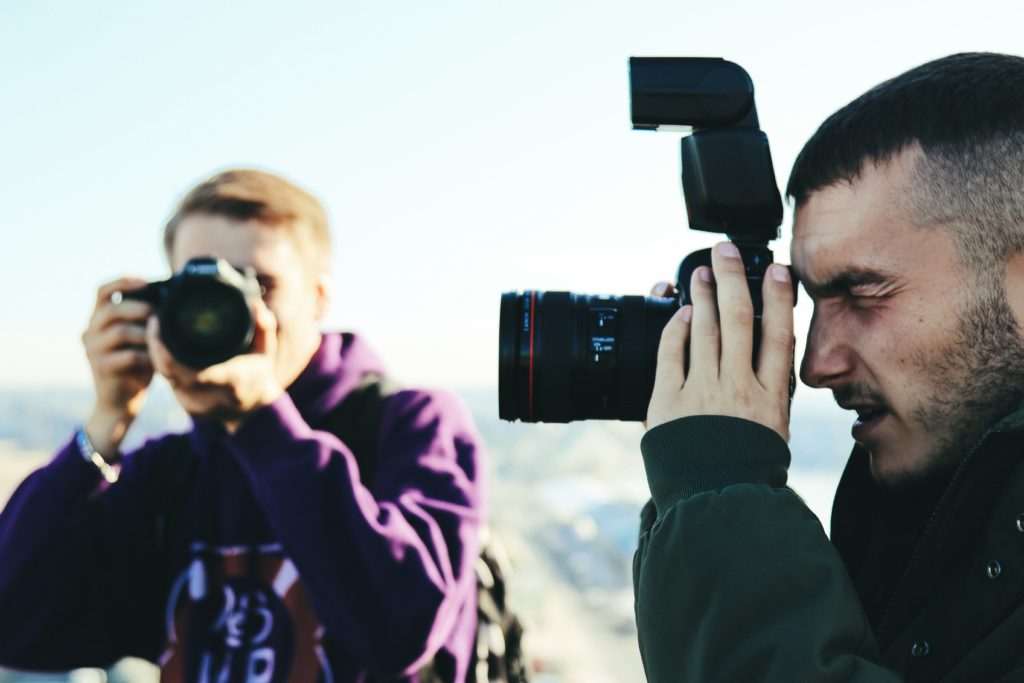One of the key areas of control that a photographer has over an image is the background. Many like to experiment with backgrounds to get various effects for their images and one of the ways in which many experiment is with bokeh. Let's dive into what you can do with bokeh in your images and how you can do it.
Wait, What Exactly Is Bokeh?
Essentially, bokeh is the aesthetic quality held by the out of focus or blurry area of a photograph. It most typically occurs in photographs that are taken with a shallow depth of field and a higher contrast background. There is good and bad bokeh. Technically, the quality of bokeh comes from your lenses aperture shape and abberation; however, a lot of it has to do with personal taste, too.
In the portrait below, you can see the “good” bokeh in the background. Traditionally, bokeh is meant to subtly blend the background without distracting the eye from the subject. Later on, we'll talk about ways we can bend this rule a little.
How To Make Custom Bokeh Shapes
The shape the bokeh takes on will replicate the shape of your lenses aperture opening, which looks great, but it's so simple to customize that shape, we really have no reason not to every once in a while, right? Here's how to do it in a several simple steps.
- Gather your supplies, you'll need a piece of construction paper, a pencil, scissors, a craft knife, and a wide aperture lens that will allow you to shoot with a shallow depth of field. Sidenote: I used some scrap posterboard which holds up much nicer than construction paper, but it was much more difficult to cut. Make sure you have a sharp knife if you go this route!)
- Stand the lens upright, front-side down, onto the construction paper and trace around the diameter of the lens. You can also use a UV filter that fits the lens. The idea is to trace a cirlce onto the paper that is the same size as the lens.
- Cut the circle out, leaving a little pull tab so you can remove it from the lens easily. It sounds unneccesary, but if you value your sanity, don't forget to leave a pull tab!
- In the center of the paper cutout, draw a shape around 15mm wide and carefully cut it out using the craft knife. When cutting the shape out, make sure you are leaving clean edges or else risk having those jagged edges appear in your photo.I made a star because drawing and cutting shapes is not my strong point and I wanted to start with something simple, but the possibilities are endless. You could do hearts, music notes, paw prints, anything you can think of that is shapely. In the photo below, Flickr user, Ethnocentrics, has done a very nice job of repurposing some old postcards into pure photographic fun.
- Finally, wedge the paper onto your lens or UV filter and push it as close to the glass as possible. It should fit in there snugly without having to be held in with tape. Make sure the entire lens surface is covered to avoid “light leaks” around the edges of the paper. That's it, now you're ready to start shooting.
Shooting Tips
Gather up your bokeh filters, grab your camera, and go look for light! Here are few tips to get you on your way.
- Open your aperture as wide as it goes to get a shallow depth of field.
- Select a background with bright highlights and dark shadows, such as a Christmas tree that has bright lights and dark branches.
- Get your subject in fairly close the camera to get a sharp focus and the lights in the background far enough away so they are out-of-focus. Luckily, the bokeh will appear in your viewfinder exactly as they will in the photograph, which will remove any guess work for you. Just adjust the focus until it looks just how you want it and push the shutter release.
- Use bokeh shapes that play on the subject matter. Just because the background is blurred out, doesn't mean a photographer should disregard it–it's still part of the photo. Instead, use the out-of-focus area to the photographs advantage.
One last thing, bokeh isn't seasonal. Sure, Christmas lights look really awesome, but you can get great bokeh shots year round, 24-hours a day. Don't limit yourself! Feel free to post your best bokeh shots over in the forums or in the comments section below!








2 Comments
I have enjoyed playing with Bokeh. It is one of the things that can only be obtained in the camera. No amount of photoshopping can create an effective result.
The lowest aperture on my camera is f.45. Do I have to have a wider aperture lens when using bokeh?